Model Context Protocol (MCP) finally gives AI models a way to access the business data needed to make them really useful at work. CData MCP Servers have the depth and performance to make sure AI has access to all of the answers.
Try them now for free →Extract, Transform, and Load PingOne Data in Informatica PowerCenter
Create a simple Workflow for PingOne data in Informatica PowerCenter.
Informatica provides a powerful, elegant means of transporting and transforming your data. By utilizing the CData ODBC Driver for PingOne, you are gaining access to a driver based on industry-proven standards that integrates seamlessly with Informatica's powerful data transportation and manipulation features. This tutorial shows how to create a simple Workflow in Informatica PowerCenter to extract PingOne data and load it into a flat file.
Add PingOne as an ODBC Data Source
If you have not already, install the driver on the PowerCenter server and client machines. On both machines, specify the connection properties in an ODBC DSN (data source name). This is the last step of the driver installation. You can use the Microsoft ODBC Data Source Administrator to create and configure ODBC DSNs.
To connect to PingOne, configure these properties:
- Region: The region where the data for your PingOne organization is being hosted.
- AuthScheme: The type of authentication to use when connecting to PingOne.
- Either WorkerAppEnvironmentId (required when using the default PingOne domain) or AuthorizationServerURL, configured as described below.
Configuring WorkerAppEnvironmentId
WorkerAppEnvironmentId is the ID of the PingOne environment in which your Worker application resides. This parameter is used only when the environment is using the default PingOne domain (auth.pingone). It is configured after you have created the custom OAuth application you will use to authenticate to PingOne, as described in Creating a Custom OAuth Application in the Help documentation.
First, find the value for this property:
- From the home page of your PingOne organization, move to the navigation sidebar and click Environments.
- Find the environment in which you have created your custom OAuth/Worker application (usually Administrators), and click Manage Environment. The environment's home page displays.
- In the environment's home page navigation sidebar, click Applications.
- Find your OAuth or Worker application details in the list.
-
Copy the value in the Environment ID field.
It should look similar to:
WorkerAppEnvironmentId='11e96fc7-aa4d-4a60-8196-9acf91424eca'
Now set WorkerAppEnvironmentId to the value of the Environment ID field.
Configuring AuthorizationServerURL
AuthorizationServerURL is the base URL of the PingOne authorization server for the environment where your application is located. This property is only used when you have set up a custom domain for the environment, as described in the PingOne platform API documentation. See Custom Domains.
Authenticating to PingOne with OAuth
PingOne supports both OAuth and OAuthClient authentication. In addition to performing the configuration steps described above, there are two more steps to complete to support OAuth or OAuthCliet authentication:
- Create and configure a custom OAuth application, as described in Creating a Custom OAuth Application in the Help documentation.
- To ensure that the driver can access the entities in Data Model, confirm that you have configured the correct roles for the admin user/worker application you will be using, as described in Administrator Roles in the Help documentation.
- Set the appropriate properties for the authscheme and authflow of your choice, as described in the following subsections.
OAuth (Authorization Code grant)
Set AuthScheme to OAuth.
Desktop Applications
Get and Refresh the OAuth Access Token
After setting the following, you are ready to connect:
- InitiateOAuth: GETANDREFRESH. To avoid the need to repeat the OAuth exchange and manually setting the OAuthAccessToken each time you connect, use InitiateOAuth.
- OAuthClientId: The Client ID you obtained when you created your custom OAuth application.
- OAuthClientSecret: The Client Secret you obtained when you created your custom OAuth application.
- CallbackURL: The redirect URI you defined when you registered your custom OAuth application. For example: https://localhost:3333
When you connect, the driver opens PingOne's OAuth endpoint in your default browser. Log in and grant permissions to the application. The driver then completes the OAuth process:
- The driver obtains an access token from PingOne and uses it to request data.
- The OAuth values are saved in the location specified in OAuthSettingsLocation, to be persisted across connections.
The driver refreshes the access token automatically when it expires.
For other OAuth methods, including Web Applications, Headless Machines, or Client Credentials Grant, refer to the Help documentation.
Create an ETL Workflow in PowerCenter
Follow the steps below to create a workflow in PowerCenter to pull PingOne data and push it into a flat file.
Create a Source Using the ODBC Driver
- In PowerCenter Workflow Manager, add a new ODBC relational connection by going to Connections -> Relational, and in the first window select the ODBC type and click New.
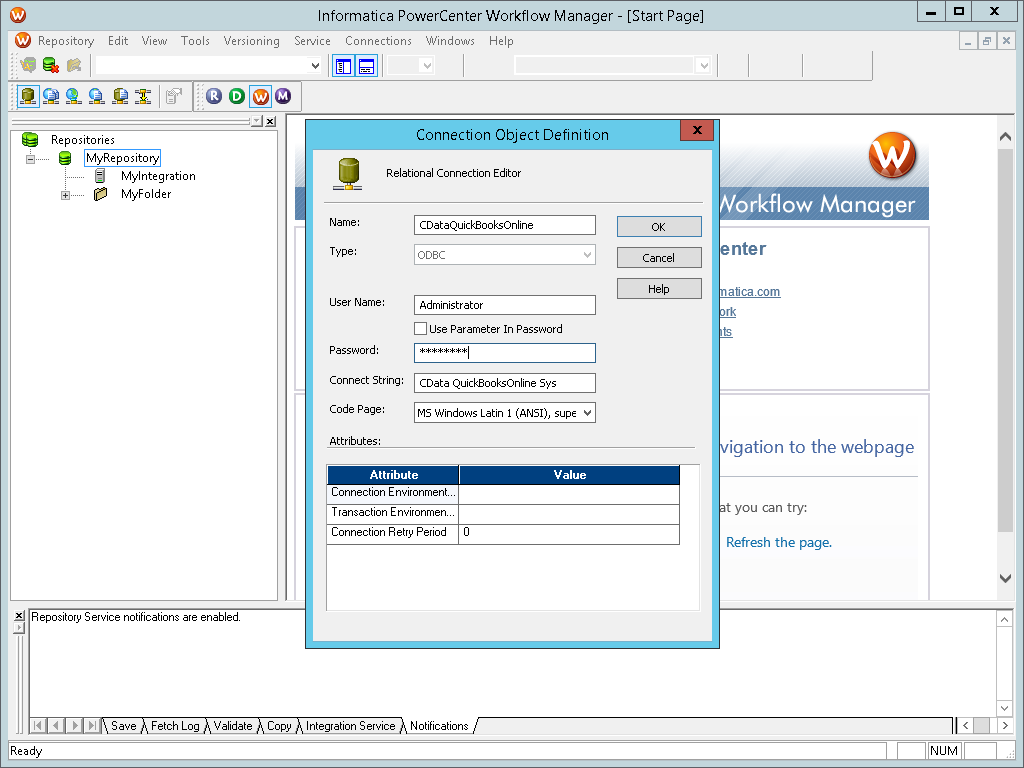
- In the Relational Connection Editor, set the name of the newly created connection and set the User Name and Password based on the credentials utilized to connect to your Repository. Under the Connection String input your System DSN, which by default is called 'CData PingOne Sys'.
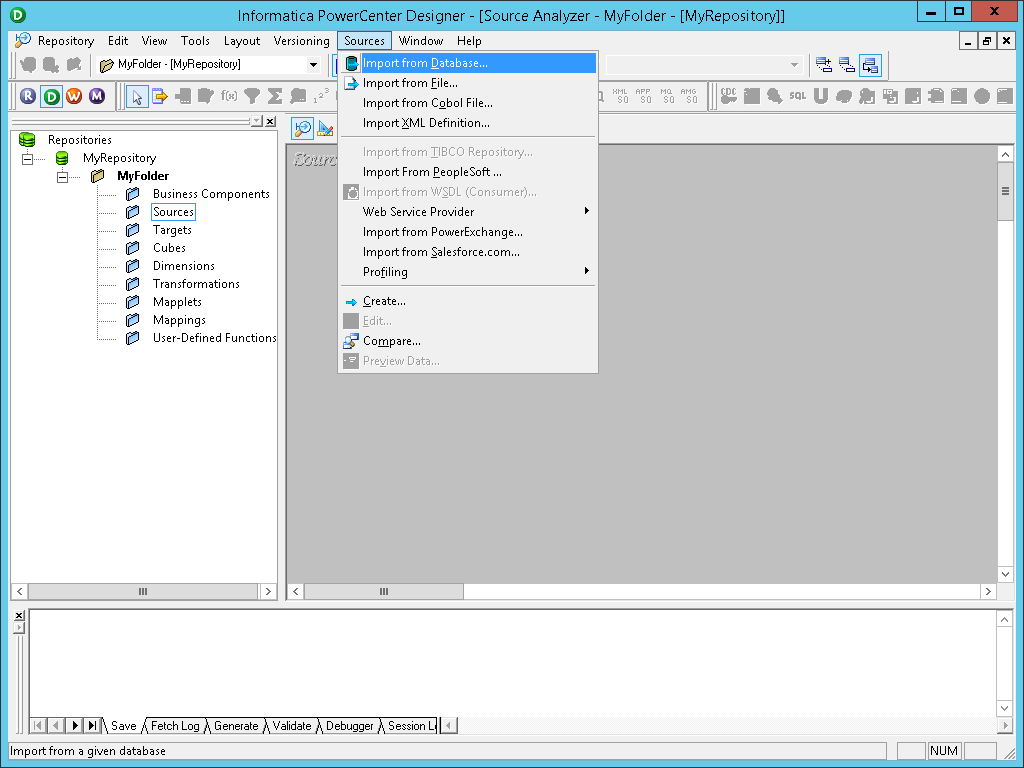
- In PowerCenter Designer, connect to your repository and open your folder. If you do not already have a folder created, you will need to manually create a folder for your repository. To create a folder, open Informatica PowerCenter Repository Manager, connect to your Repository Service and go to Folder -> Create to create a new folder.
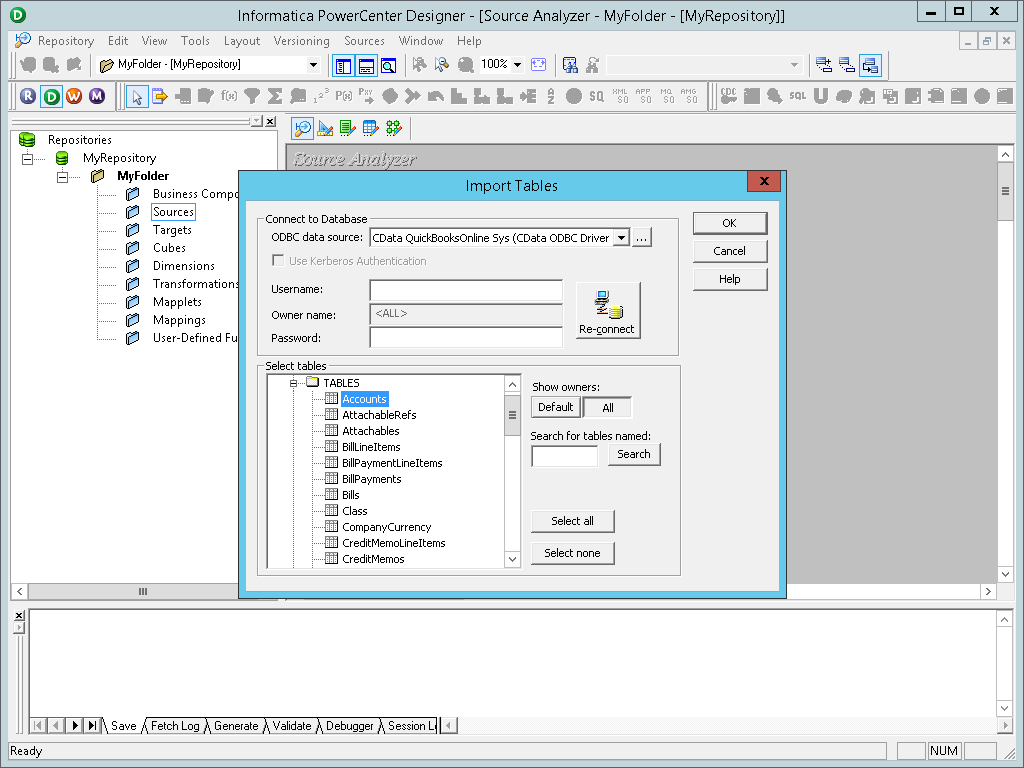
- Select the Source Analyzer, click the sources menu, and select Import from Database...
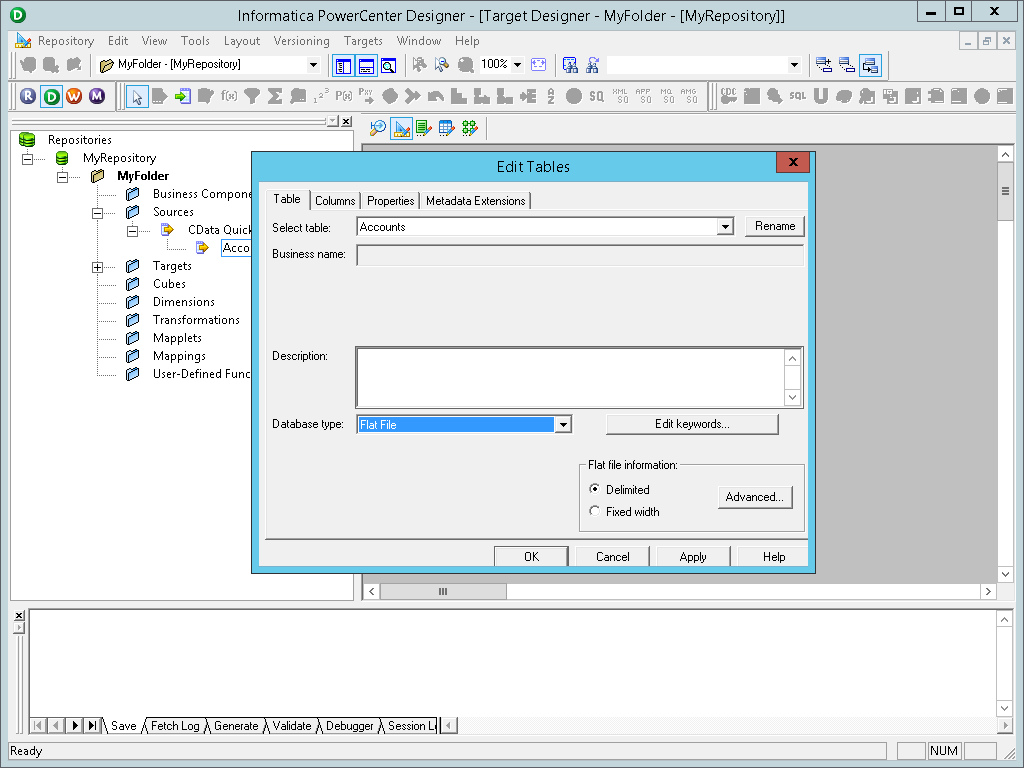
- In the drop-down menu for ODBC data source, select the DSN you previously configured (CData PingOne Sys).
- Click connect and select the tables and views to include.
- Click OK.
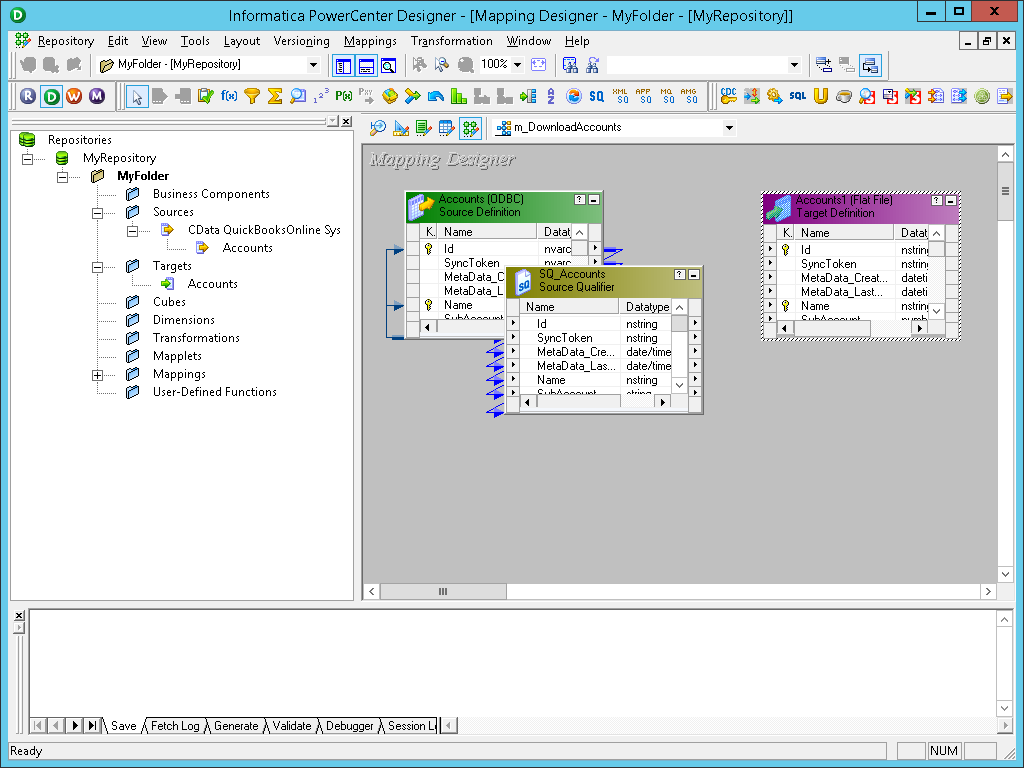
Create a Flat File Target Based on the Source
- Select the Target Designer and drag and drop the previously created source onto the workspace. Using the existing source copies the columns into the target.
- Right-click the new target, click edit, and change the database type to flat file.
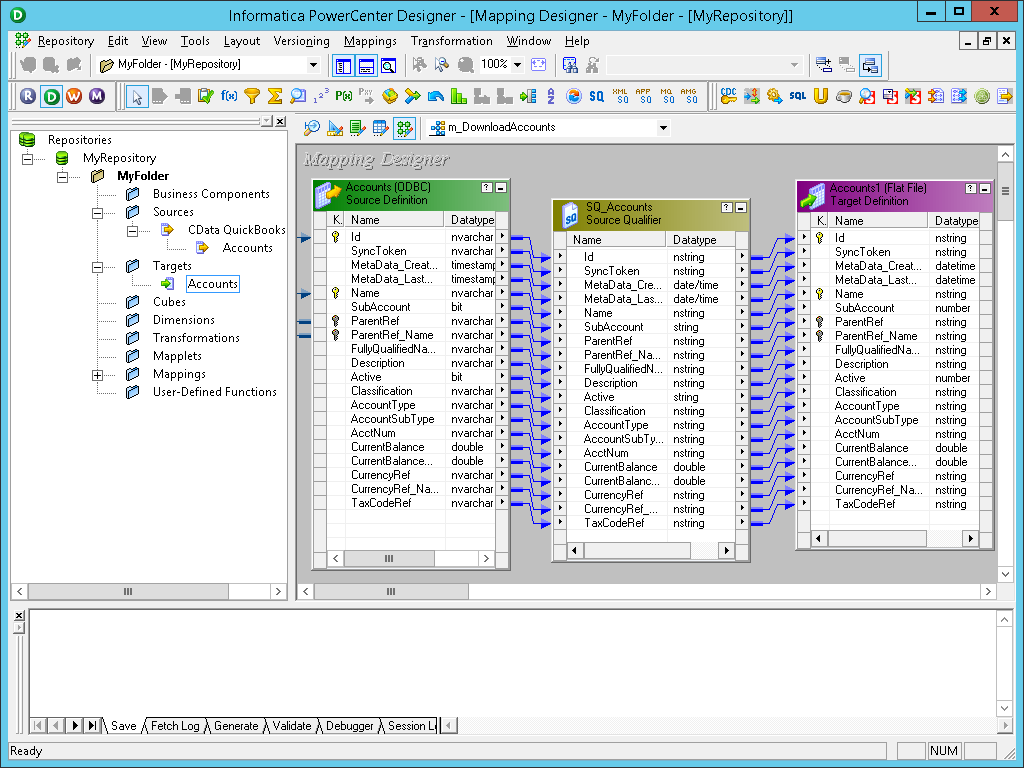
Create a Mapping to Between PingOne Data and a Flat File
- Click on the Mapping Designer.
- Drag the source and target to the workspace (name the new mapping, if prompted).
- Right-click on the workspace and select Autolink by Name.
- Drag the columns from the source qualifier to the target definition.
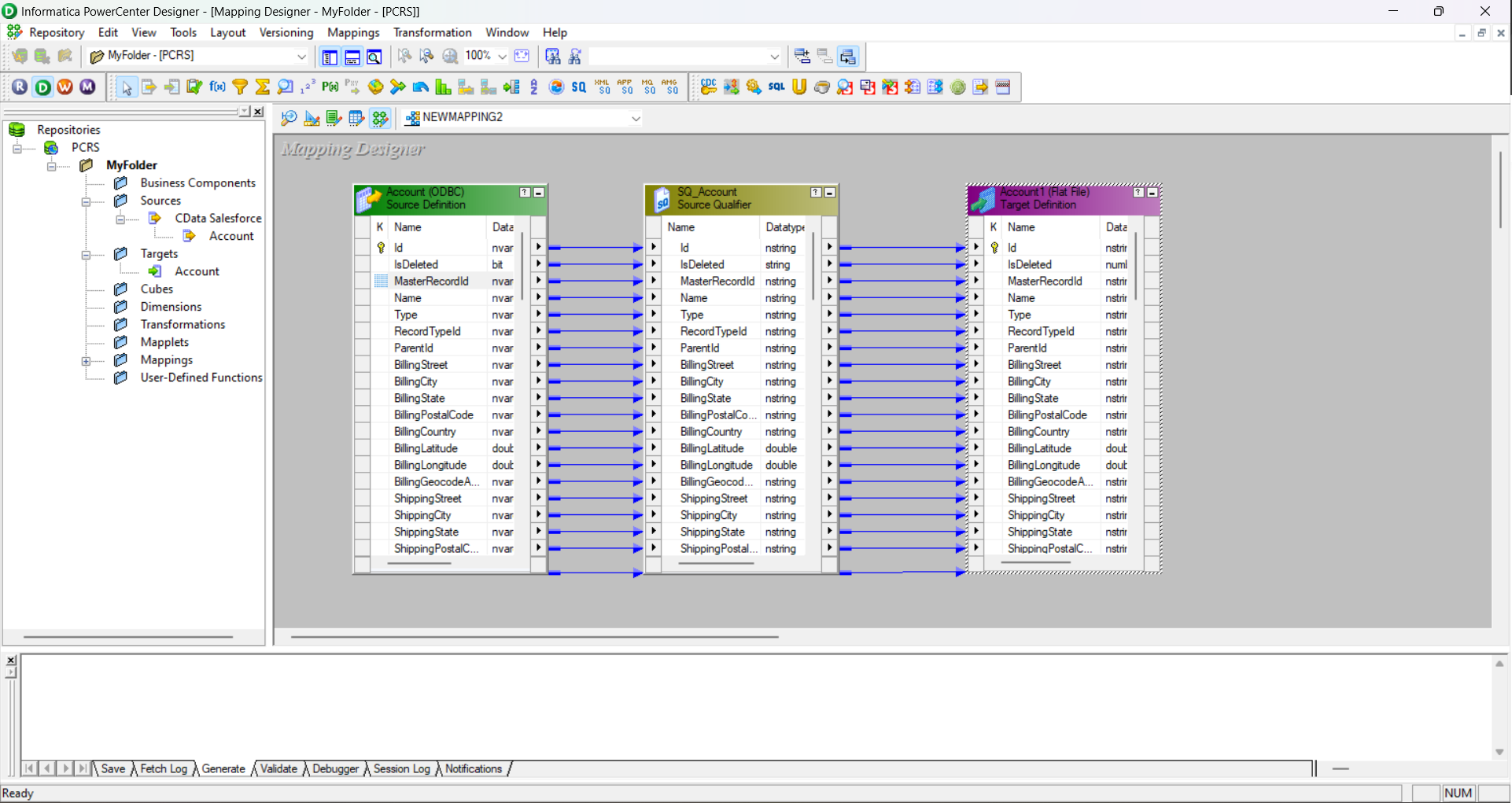
- Save the folder (Ctrl + S).
Create Workflow Based on the Mapping
With the source, target, and mapping created and saved, you are now ready to create the workflow.
- Right-click the mapping and select generate workflow to open the Workflow Generation wizard.
- Create a workflow with a non-reusable session.
- Ensure that you have properly configured the connection object and set the prefixes. If you have not already done so, you will need to create an Integration Service. To create an Integration Service, open your Administrator site, and under Domain, create a new PowerCenter Integration Service. Under the PowerCenter Repository Service, select the Repository you are referring to, and as Username and Password, use your Administrator login information.
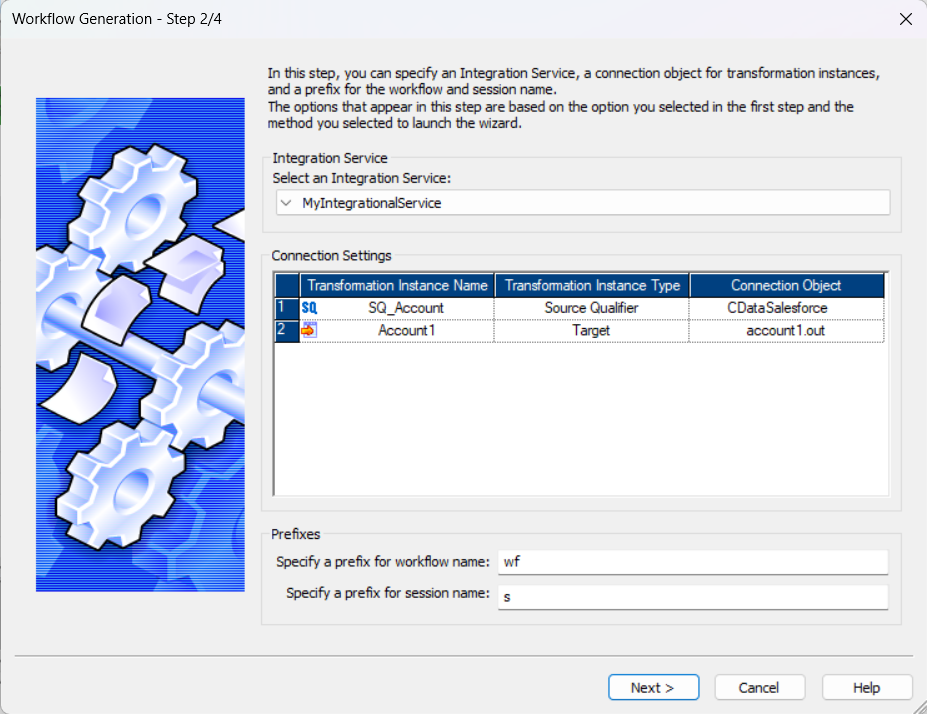
- Configure the Connection as needed.
- Review the Workflow and click Finish.

With a workflow created, you can open the PowerCenter Workflow Manager to access and start the workflow, quickly transferring PingOne data into a flat file. With the CData ODBC Driver for PingOne, you can configure sources and targets in PowerCenter to integrate PingOne data into any of the elegant and powerful features in Informatica PowerCenter.
